

Make Your Streams Stand Out

Stream up to eight programs at once, each with four outputs for a total of 32 streams. Full suite of stream-specific audio processing tools. Optimize performance of audio content.

AAC, MP3 and Opus encoders. Reaching a broad range of end user devices and players.

Metadata agnostic. Lua transformation filters adapt metadata input from any automation system into any required output format.
Cloud-ready for the future, yet compatible with standard CDN and streaming platforms now. Supports HLS, Icecast, RTMP, and RTP streams.
All-inclusive Linux and AoIP appliance. No Windows® drivers, updates or PC needed. Add Streamblade to any audio network via WheatNet-IP, analog, AES3, or AES67 inputs or add Wheatstream to any existing WheatNet-IP or AES67 compatible networks.

STREAMBLADE & WHEATSTREAM STREAMING AUDIO PROCESSORS

wheatstone.com/stream-rw21a

A handy tester
Ron Huckeby explains why he likes his CTP audio tool.

Supply chain woes
Component delays and price increases have eased somewhat, but the situation is far from normal.
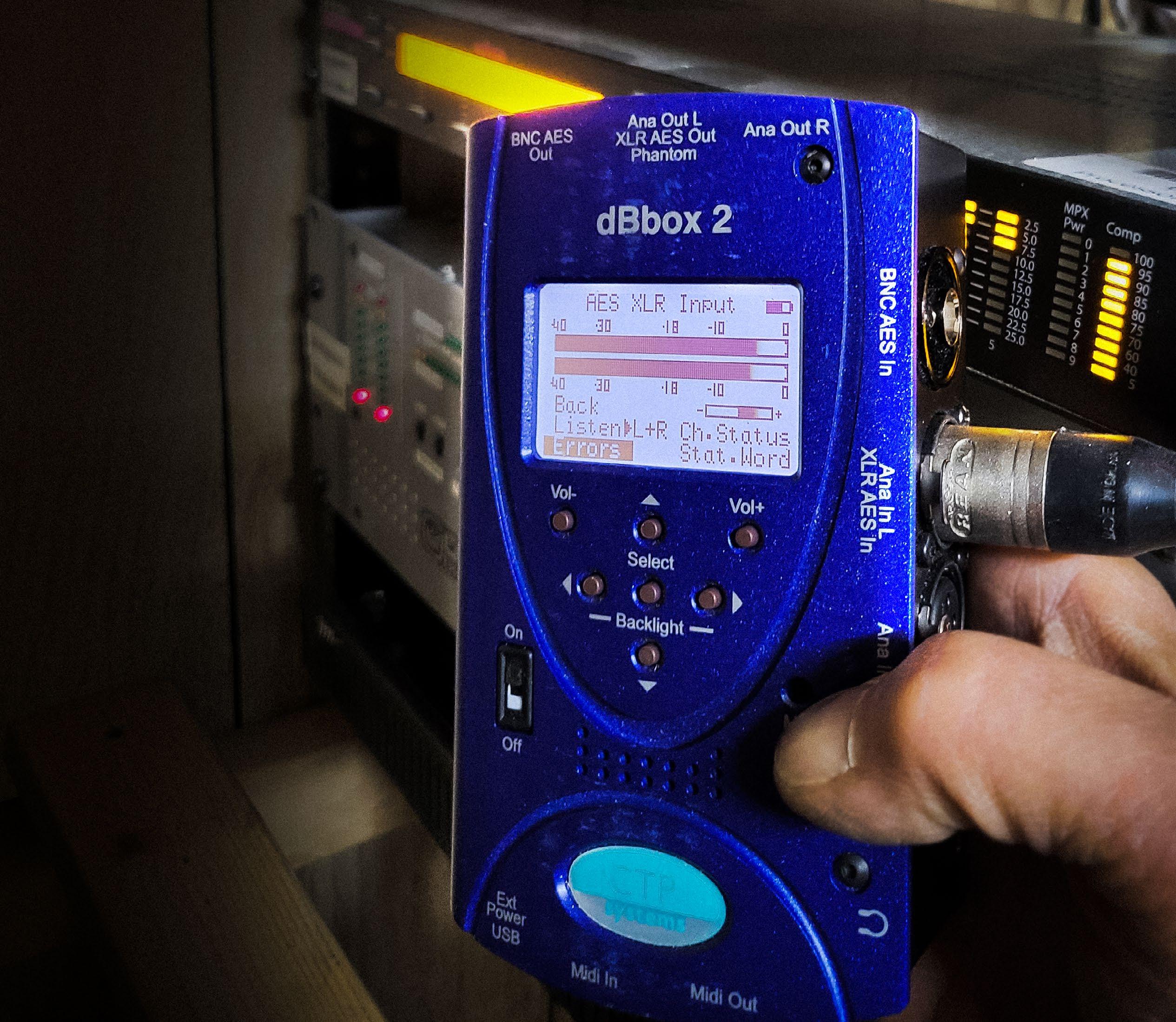
Audio basics for radio
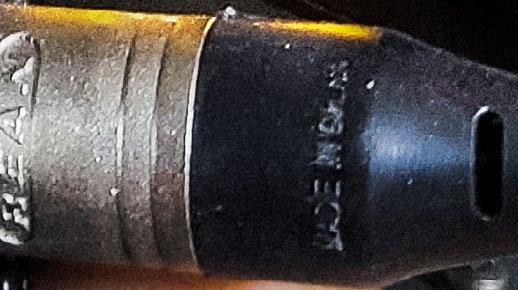

Some helpful guiding principles from Mark Persons.
Protect farm radio
Brian Winnekins calls on broadcasters to turn up the heat on carmakers.

www.radioworld.com
FOLLOW US
www.twitter.com/radioworld_news
www.facebook.com/RadioWorldMagazine
CONTENT
Managing Director, Content & Editor in Chief Paul J. McLane, paul.mclane@futurenet.com, 845-414-6105
Content Producer & SmartBrief Editor Elle Kehres, elle.kehres@futurenet.com
Technical Advisors Thomas R. McGinley, Doug Irwin
Technical Editor, RW Engineering Extra W.C. “Cris” Alexander
Contributors: Susan Ashworth, David Bialik, John Bisset, Edwin Bukont, James Careless, Ken Deutsch, Mark Durenberger, Charles Fitch, Donna Halper, Alan Jurison, Paul Kaminski, John Kean, Larry Langford, Mark Lapidus, Michael LeClair, Frank McCoy, Jim Peck, Mark Persons, Stephen M. Poole, James O’Neal, John Schneider, Dan Slentz, Dennis Sloatman, Randy Stine, Tom Vernon, Jennifer Waits, Steve Walker, Chris Wygal
Production Manager Nicole Schilling
Managing Design Director Nicole Cobban
Senior Design Directors Lisa McIntosh and Will Shum
ADVERTISING SALES
Senior Business Director & Publisher, Radio World John Casey, john.casey@futurenet.com, 845-678-3839
Publisher, Radio World International
Raffaella Calabrese, raffaella.calabrese@futurenet.com, +39-320-891-1938
SUBSCRIBER CUSTOMER SERVICE
To subscribe, change your address, or check on your current account status, go to www.radioworld.com and click on Subscribe, email futureplc@computerfulfillment.com, call 888-266-5828, or write P.O. Box 1051, Lowell, MA 01853. Licensing/Reprints/Permissions
Radio World is available for licensing. Contact the Licensing team to discuss partnership opportunities.
Head of Print Licensing Rachel Shaw licensing@futurenet.com
MANAGEMENT
Senior Vice President Group Elizabeth Deeming
Chief Revenue Officer, B2B Walt Phillips

Vice President, B2B Tech Group Carmel King
Vice President, Sales, B2B Tech Group Adam Goldstein

Head of Production US & UK Mark Constance
Head of Design Rodney Dive
FUTURE US, INC.
Future US LLC, 130 West 42nd Street, 7th Floor, New York, NY 10036
All contents ©Future US, Inc. or published under licence. All rights reserved. No part of this magazine may be used, stored, transmitted or reproduced in any way without the prior written permission of the publisher. Future Publishing Limited (company number 02008885) is registered in England and Wales. Registered office: Quay House, The Ambury, Bath BA1 1UA. All information contained in this publication is for information only and is, as far as we are aware, correct at the time of going to press. Future cannot accept any responsibility for errors or inaccuracies in such information. You are advised to contact manufacturers and retailers directly with regard to the price of products/services referred to in this publication. Apps and websites mentioned in this publication are not under our control. We are not responsible for their contents or any other changes or updates to them. This magazine is fully independent and not affiliated in any way with the companies mentioned herein.
If you submit material to us, you warrant that you own the material and/or have the necessary rights/ permissions to supply the material and you automatically grant Future and its licensees a licence to publish your submission in whole or in part in any/all issues and/or editions of publications, in any format published worldwide and on associated websites, social media channels and associated products. Any material you submit is sent at your own risk and, although every care is taken, neither Future nor its employees, agents, subcontractors or licensees shall be liable for loss or damage. We assume all unsolicited material is for publication unless otherwise stated, and reserve the right to edit, amend, adapt all submissions.
Radio World (ISSN: 0274-8541) is published bi-weekly with additional issues in February, April, June, August, October and December by Future US, Inc., 130 West 42nd Street, 7th Floor, New York, NY 10036. Phone: (978) 667-0352. Periodicals postage rates are paid at New York, NY and additional mailing offices.
POSTMASTER: Send address changes to Radio World, PO Box 1051, Lowell, MA 01853.
Breakfast with Gary
A sad but fond memory
When Gary Kline died at age 58 in January, Radio World lost a friend as well as a colleague. You can read his obituary at radioworld.com, search his name; but I’d like to share a more personal memory.
Gary wanted to meet with Radio World Publisher John Casey and me at every spring NAB Show. His enthusiastic email asking to set up our appointment was typically my marker that convention planning had started. We’d meet over breakfast and the formula was consistent: Gary would arrive hurriedly while looking at his phone, plop down and say that he wanted to pick our brains about what was going on around the industry. I wouldn’t even have gotten up to the buffet yet. I’d mention one topic. And then he was off.
The man’s energy and way of thinking were amazing. His mind raced. Ideas would tumble out, usually in the form of questions: “Oh! And virtualization! That’s another thing! I was talking to a potential client just yesterday about this. It sounds great and I think he should do it; but I asked him: ‘Have you thought about this? Have you thought about that? What about the impact on this other part of your operation?’ Hey Paul! You should do a story about stuff they need to know to virtualize a studio. Which reminds me! Have you thought about a feature on affordable PTZ cameras? …”
3 From the Editor
4 Newswatch
5 Supply chain issues nag equipment manufacturers
8 AudioSciences specializes in digital audio peripherals
FEATURES
10 Workbench: These boots are made for installin’
14 A threat even bigger than no car radio
18 Let’s talk about some basics of audio for radio
22 Groups Push for FM Digital Power Increase
24 Traffic reporting in the age of Waze
26 Why radio should care about clean rooms
29 Help Farm Radio fight for radio
Please recycle. We are committed to only using magazine paper which is derived from responsibly managed, certified forestry and chlorine-free manufacture. The paper in this magazine was sourced and produced from sustainable managed forests, conforming to strict environmental and socioeconomic standards.
Continued from page 3
I’d keep a reporter’s notebook at my elbow because I didn’t want to lose his many story ideas. I don’t know how he managed to eat, because he practically never stopped talking. And not just suggesting good topics, but providing good contacts. “I’m consulting to this company that’s doing a cool project in Florida, and one of the studios looks into a giant fish tank! I’ll put you in touch with them! Hey wouldn’t it be great if you did a sidebar with tips about how to work with aquatic environments?”
Then after 90 minutes or so, I’d look at my phone and say, “Gary I have to be on the show floor in 10 minutes. I gotta run.” And he’d say “Oh, no! I haven’t even had a chance to hear what YOU guys are hearing out there in the world!” It was true, and I loved it.
I have many good memories of Gary. But those conversations — er, listening sessions — are a treasured one.
When we named Gary the recipient of the Radio World Excellence in Engineering Award in 2009, I wrote that he was not only a forward-looking technical talent but that he understood how to communicate engineering concepts to C-level executives in a way that supported their business goals.
But perhaps the quote that captures him most came from another colleague. He told Gary: “You are one of the radio guys who always is ‘on it’ 24 x 7 x 365.”
Shively Labs Is on the Market
Howell Laboratories Inc. is looking to sell Shively Labs after more than 40 years as its owner.
Vice President Angela Gillespie wrote that the parent firm “has decided to switch focus away from broadcasting and onto new growth opportunities.”
Shively Labs was founded in 1963 by Ed Shively, formerly of RCA and Dielectric. In 1980 he sold it to Howell.
Howell was founded in 1964 and built its business on products for the U.S. Navy and Coast Guard.
The antenna manufacturing sector saw another recent change when Radio Frequency Systems (RFS) announced it would exit the broadcast manufacturing business.
Elenos Names Redmond President/COO
Elenos Group appointed Rich Redmond as its president and chief operating officer. He will be based in the U.S. at Broadcast Electronics, an Elenos-owned company, and will be responsible for operations in the Americas.
Redmond has experience in station management but is probably best known for his senior leadership roles at Harris Broadcast and GatesAir. He also founded Strativa Advisors, a technology consultancy providing leadership for radio-targeted advertising and cloud-based transmission site monitoring solutions.
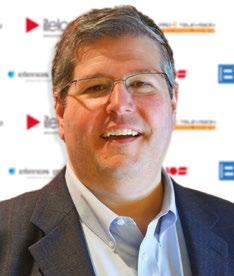
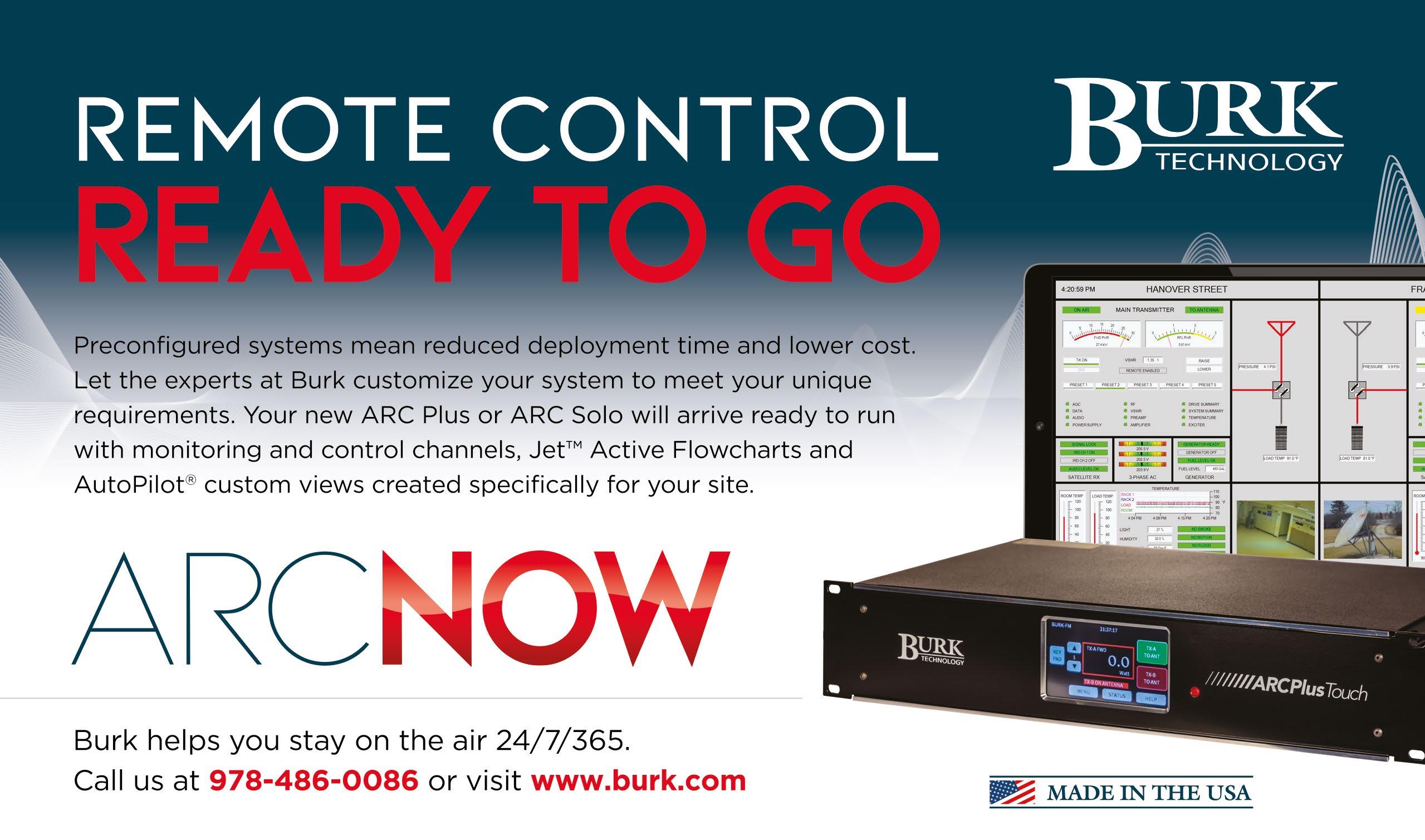
Supply issues nag equipment manufacturers
Companies say inflation is creating volatile pricing for components
The return to a more normal broadcast equipment supply chain will have to wait a bit longer, as component delivery issues persist for many manufacturers.
Interruptions or delays in shipping transmitters, consoles and monitors may ease in the New Year, according to observers, who say that the rise of costs for radio projects may have slowed. But the situation is far from what it was before the pandemic.
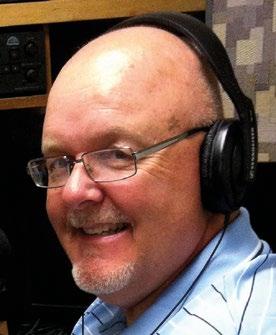
At their worst, component orders were taking 50 or 60 weeks and in some cases even longer. There have since been small improvements in wait times, according to equipment makers and vendors who spoke on condition of anonymity.

Helping somewhat was news that China’s manufacturing sector has mostly reopened. But fears that new COVID outbreaks may disrupt production of computer chips and components persist, according to multiple media reports.
Opinions about the situation from our industry sources vary widely.
“Although some in the media are saying supply chains are improving, we have largely yet to see it on the ground,” said an executive with one codec manufacturer.
“In essence, there haven’t been a lot of changes in the last six months. The earliest we can see any signs of normality returning to the market for components would be 2024, but this could easily stretch into 2025.”
That level of pessimism was commonplace among responders in the electronics equipment sector as vendors try their best to mitigate supply issues and the risks associated with them.
“The IC [integrated circuit] shortage is still real,” said one vendor who works with both consoles and software. “It has improved some, but you will still see some ICs with lead times of six to12 months. We went ahead and purchased two years’ worth of ICs so that we don’t have any shortages on our end.”
Component shortages are widespread, according to an audio processor manufacturer. “From programmable ICs to metalwork to you-name-it. We have received quotes for 102-week lead times on some items. We have placed
scheduled orders into mid-2024 to make sure we have sufficient components.”
Equipment production flexibility appears to be more important than ever in this business climate.
“We redesigned several subassemblies to use more commonly available parts and have standardized available components across multiple product lines,” the person said. “Additionally, we will be introducing multiple new products in 2023 that use a common hardware platform.”
Another automation supplier reported component prices continue to climb.
“Two factors are feeding this: general inflation in the economy, as well as inflationary pressures due to component supply shortages. This will continue, and we foresee equipment price rises for most manufacturers will be inevitable to maintain profitability.
“Some equipment manufacturers who outsource manufacturing may not be as well placed to manage or absorb the increased cost of chips and other components, as the margins will be higher when added to the overall manufacturing cost,” this executive said.
Shipping delays of microchips are real, according to a transmitter manufacturer: “Things are becoming easier to manage. Distributors have had more stock in the last six months. But the lead times are still unreliable. For us backorders that were projected for January and February of 2023 have moved to the end of 2023.”
One transmitter maker said their company was a bit more optimistic heading into 2023: “As far as what I see, yes, things are getting better and prices are coming down. Not back to normal, but not nearly as bad as it has been. We continue to ship all of our products from stock. No delivery delays.”
Above A worker is seen in the production chain at Renesas Electronics in Beijing in 2020.
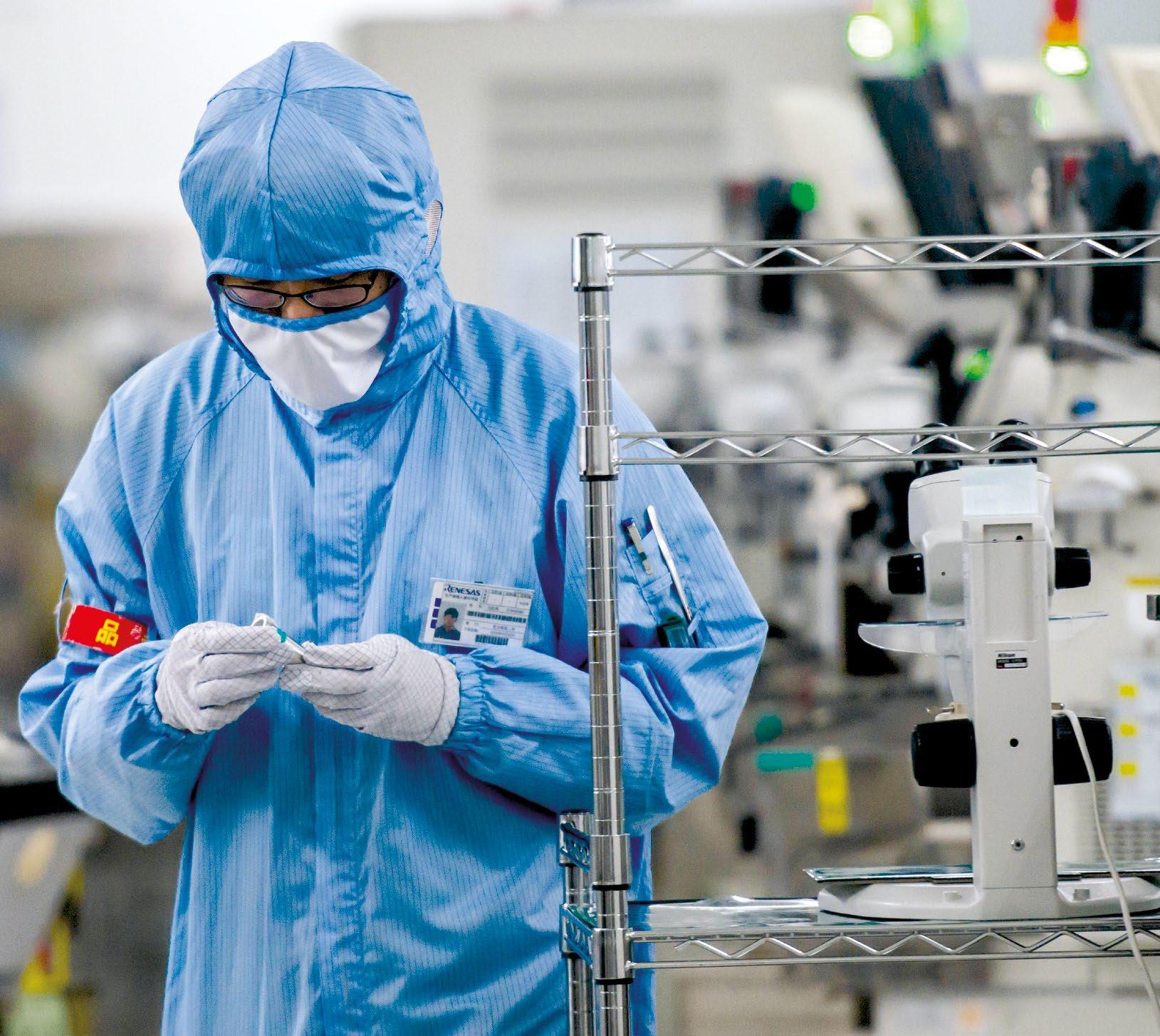
A slower economy actually could help alleviate some of the component shortages, said one observer with ties to the broadcast equipment sector.
“We are already seeing raw material prices dropping back to 2019 numbers because of less demand, which is a direct result of the slowing economy. The problem is, as you have seen with COVID and the Russian invasion of Ukraine, all of this can change overnight. Pricing continues to be very volatile.”
A radio project integration executive told Radio World the shortage of electrical components and inflated costs are having a two-fold effect on broadcasters’ projects.
“The supply chain issues are no longer unexpected, so most projects happening at this point have already accounted for long lead times in the schedule. So while there are fewer unexpected delays, there is certainly still a schedule impact. And major equipment purchasing is now being shifted closer to the start of the project planning phase.”
The integrator says broadcasters should keep lines of communication open with manufacturers and vendors to ensure a smooth timeline for their projects.
“They’re facing the same challenges that end customers are, just on a different scale. Getting into their pipeline and reinforcing your purchase intent early will help keep your project on schedule.”
“We have received quotes for 102-week lead times on some items.
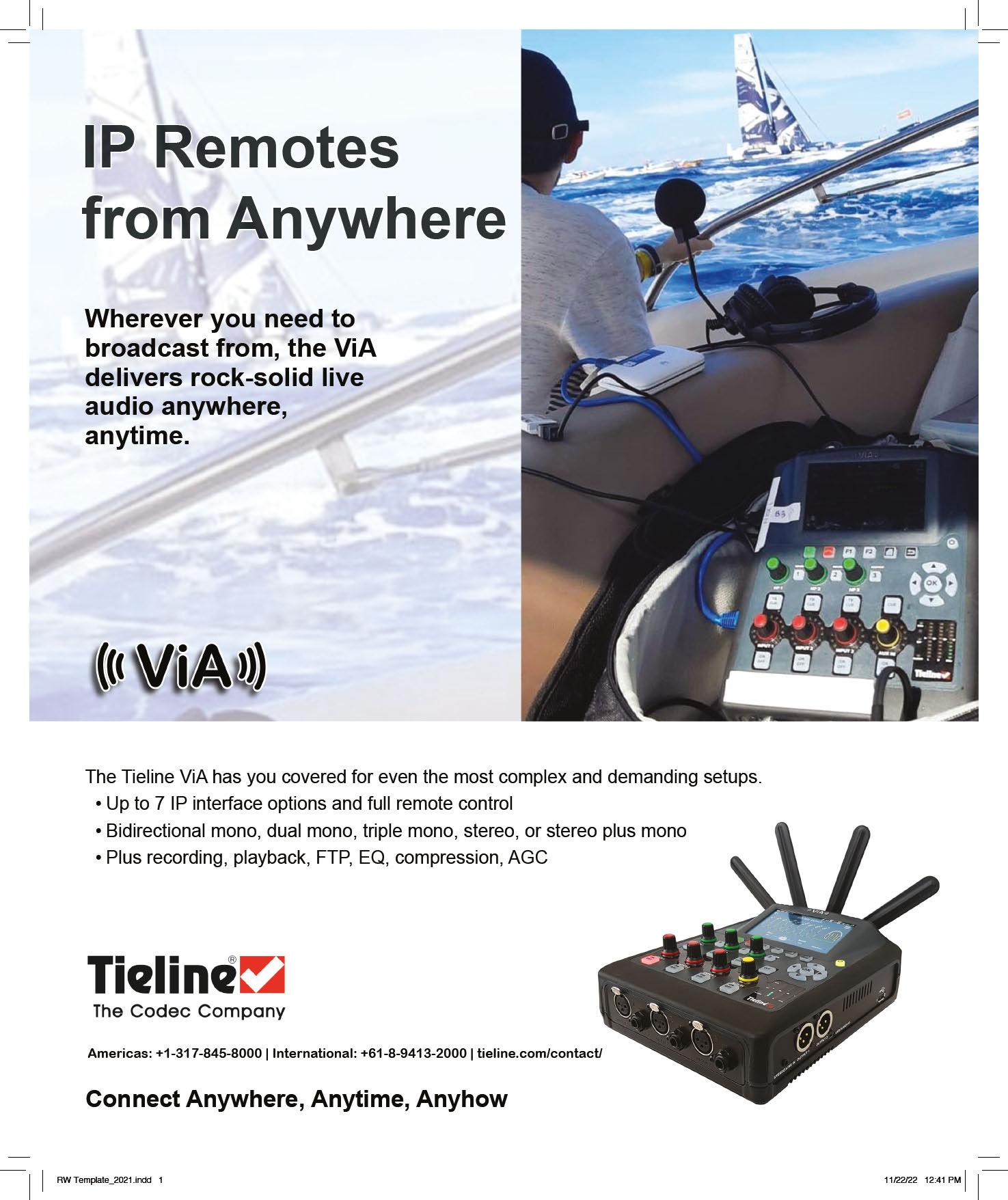
AudioScience specializes in digital audio peripherals
DSP-based products that solve problems are a focus
AudioScience makes DSP-based digital audio peripherals for broadcast and other markets. Richard Gross is president and co-founder. This interview is excerpted from the ebook “ProblemSolvers for Radio.”
Tell us about the company.
Richard Gross: In 1996, Stephen Turner and I started AudioScience to provide high-level design and manufacturing solutions to strategically targeted areas of the digital audio reseller market.

Dr. Andrew Elder joined us in 1997 to provide software expertise to the growing company. He has since moved on to pursue other endeavors.
Our combined three decades of experience in digital audio include groundbreaking innovations in soundcard design at Antex Electronics. We helped to launch the first DSP-based digital audio adapter ever offered to the digital broadcast market.
With this strong foundation we quickly grew from a successful startup into a mature, engineering-driven company now in business for 25+ years. Steve and I continue to lead it.
Our products are easy to integrate. They provide outstanding digital audio functionality and compatibility. Instead of using proprietary designs that limit system hardware and software flexibility, we develop standardsbased technology. That means our innovations are fully compatible with other products and systems. And in an industry that constantly evolves, we try to leverage our design and market expertise to deliver the most relevant, up-to-date products.
How many have you shipped over the years?
Gross: Over 100,000.
You’re known as a soundcard manufacturer. But I’d think the role of soundcards in broadcast has diminished.
Gross: You would think it has diminished. I’ve felt this way for the last 15 or so years, which is when we started
Getting to Know You
“Supply Side” is a series of interviews with broadcast manufacturers and vendors. Find past articles at www. radioworld. com/tag/supplyside
manufacturing our first networked audio product, a CobraNet card, the ASI6416.
Since then, it’s a joke with Steve and my employees — every five years I say, “This is the end of broadcast audio cards in a PC.” Every five years or so we would introduce another networked audio product, AVB, Dante and AES67.
But here we are today 25+ years later, still making a living selling sound cards to the broadcast market. We are prepared for the end of broadcast PC cards whenever that may come. We hope we are also helping our current broadcasters be prepared by providing them with networked audio IO products that will just work in their environments when they’re ready to move away from standard PC based audio. Until this time comes AudioScience will continue to provide our customers with the PC-based products they’re comfortable with.
But the business is changing, given the evolution to AoIP and network-based workflows?
Gross: Very much. No longer based on PCs and a specific operating system, but on the network and the various AoIP protocols. The current trend is to move beyond the networked studio to the radio station “studio in the cloud,” especially for the larger groups.
We’re seeing stations specifically offer traditional radio delivery as well as establishing and providing a web-based alternative for their customers. There are a number of methods to receive radio on cellphones as well, via iHeartMedia and other apps; someday manufacturers may even turn on the secret FM chip in most phones.
How have supply chain issues affected you?
Gross: These COVID-19 times have been very challenging. Never in over 40 years have we had to respond to a new purchase order with “Our best estimated delivery is,” but that’s currently the norm.
We’ve been able to keep both price increases and lead times to a reasonable level, but daily we’re being hit with surprises concerning a number of the critical components needed to manufacture our products.
Above Richard Gross and Stephen Turner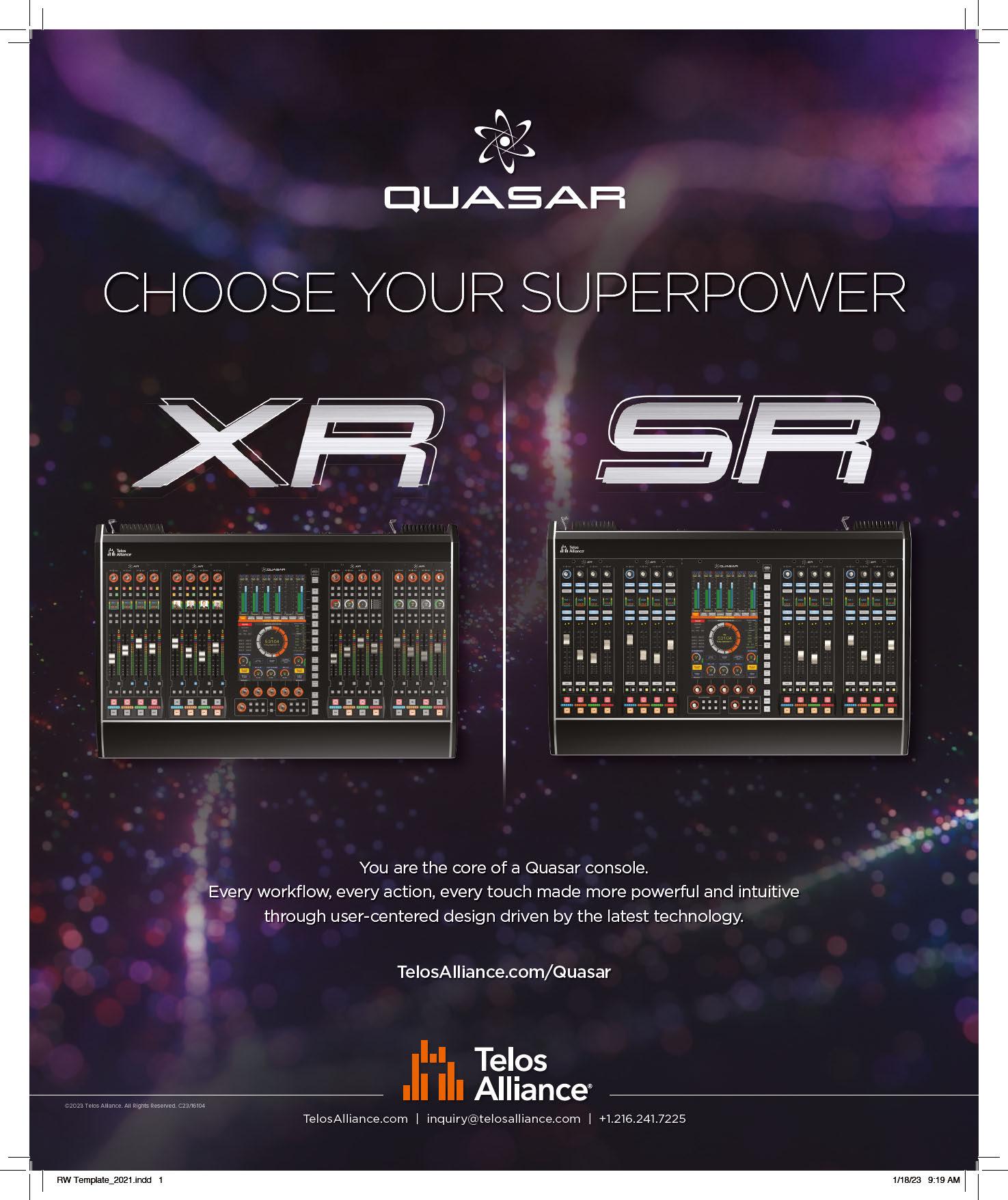 John Bisset CPBE
John Bisset CPBE

The author has spent over 50 years in broadcasting and is in his 32nd year writing Workbench. He handles western U.S. radio sales for the Telos Alliance and is a past recipient of the SBE’s Educator of the Year Award. Patch us in Connect your colleagues to good ideas. Send tips to johnpbisset@ gmail.com

These boots are made for installin’
Also, an improved AES/analog tester from CTP Systems
Patchamp offers patching and distribution technology for coaxial, fiber and Ethernet cabling/patching.
Whether you’re working with analog audio or installing AoIP with Cat-5/6 cabling (such as Angry Audio’s StudioHub cables and adaptors), you can simplify cable identification by using Patchamp colored RJ-45 boots. At $5 for a bag of 50, the price is reasonable.
At https://shop.patchamp.com/ scroll down to Connectors and look for “RJ45 Color Coded Boot 50 pcs.”
You can use colored RJ-45 boots like these from Patchamp to identify Ethernet and other cables.
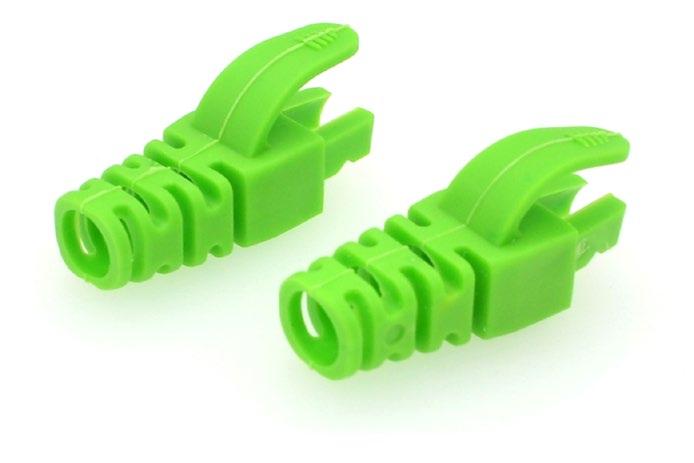
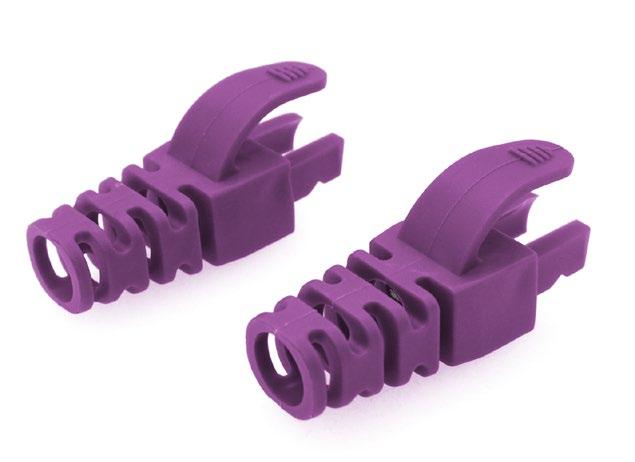

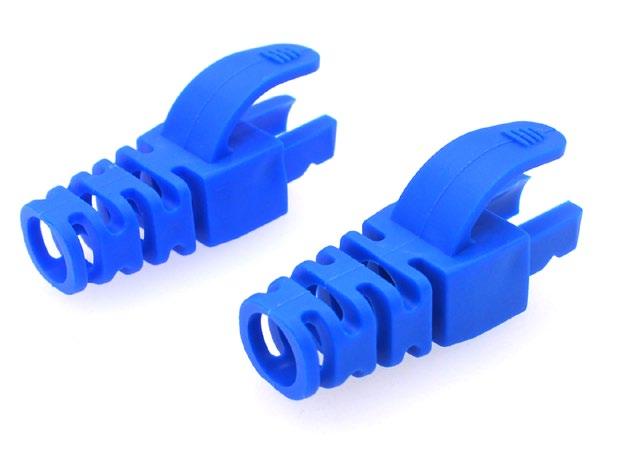

The CTP dBbox tester line is available from SCMS and provides both analog and AES/ EBU testing.

Testing, testing …
Ron Huckeby is an SBE-certified field engineer for K-Love stations in Montana and Wyoming; he saw our discussion of AES testers back in July.
Ron has a CTP Systems dBbox2 handheld tester, which handles both AES and analog, and he loves it. It runs on a 9V battery but can also be powered using a mini-USB cable and wall-wart power pack. It offers monitoring, metering and generation of stereo analog audio and AES/EBU audio.
According to CTP, the latest version, called dBbox 3, includes a more efficient power supply for longer battery life, along with an automatic power-off system. The accuracy of the test timecode generator has been improved, and the cable tester now also tests the XLR earth wire. CTP also updated the MIDI circuitry, added an LED light source and increased the loudspeaker volume.
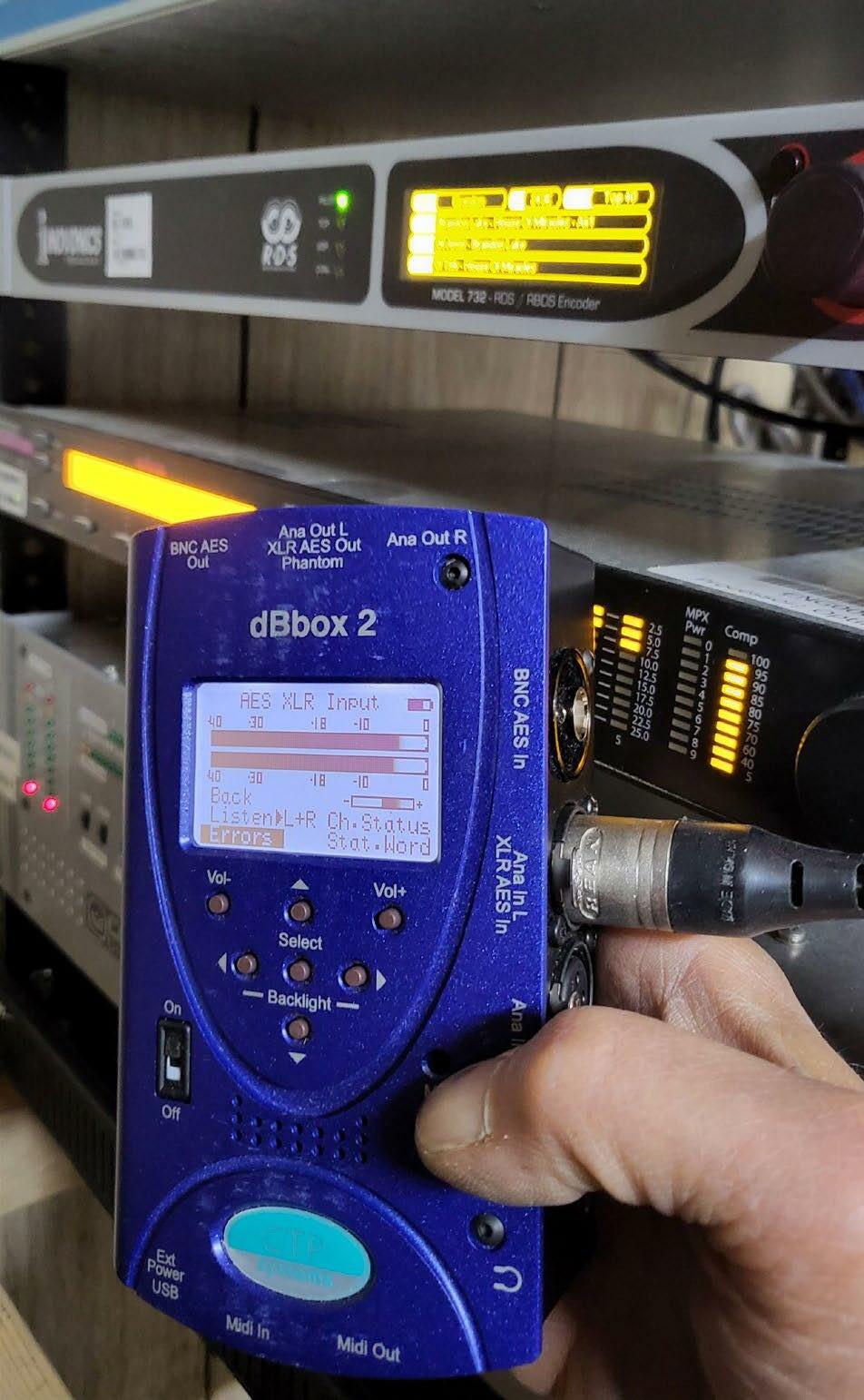
Distributors are listed at www.ctpsystems.co.uk/ distributors.html. For the U.S., Canada and South America, the CTP dBbox3 is available from SCMS at www.scmsinc. com. When you contact them at (800) 438-6040, let them know you heard about this product from the Workbench column.
Cute as a button battery
H. J. “Jay” Melnick, with Colorado Communications Group in Green Valley, Ariz., points out that a lot of equipment uses “button” batteries these days. He found a value pack assortment of these batteries at Tractor Supply Co. Usually these are sold in two- or four-packs. This blister pack has 50 batteries in four sizes and costs $8.99. The pack conveniently stores the batteries until needed and lets you monitor the number of batteries left. Search part #1243980 at http://tractorsupply.com
Don’t forget
We’ve received some great ideas for our list of things that we “Must Check” when we visit a transmitter site. If you haven’t submitted yours, there’s still time. Email your suggestions to johnpbisset@gmail.com. We’ve got some neat prizes for the best ideas.
Talk into this
Dan Slentz is a reliable source of unique web offerings and the $1,595 VO1 Vocal Booth is no exception.
This might be just the ticket when you need to add a voiceover station quickly. The VO1 requires no tools to assemble, it uses a Velcro-brand hook-and-loop fastening system instead.
The VO1 combines studio foam and acoustic felt with non-parallel wall design to avoid boxy-sounding recordings. The booth is constructed of Class A Fire-Rated materials, includes an overhead LED light. Shipping is free in the lower 48.

Learn more at www.vocalbooth.com/vo1. Scroll down the page to the three-minute video. I think you’ll be impressed.
Above left This multi-pack assortment of “button” type batteries is available from Tractor Supply.
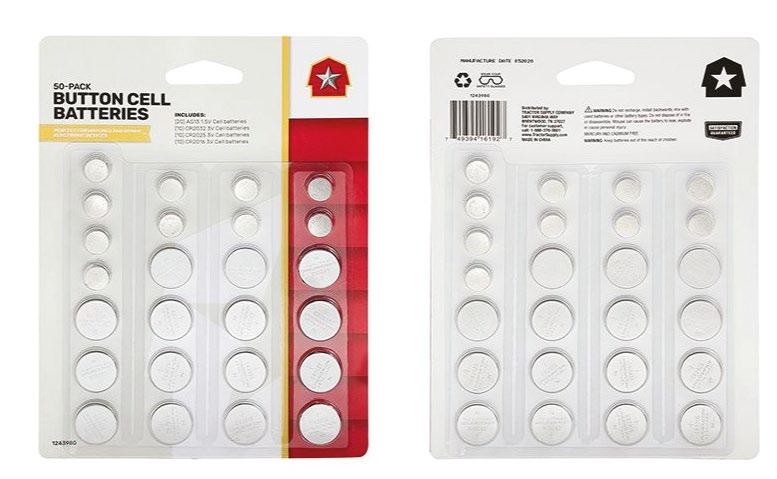
Above right A voice booth from Vocal One that’s easy to assemble. Right An inexpensive and easy way to ensure that your “outside” lights aren’t switched off inadvertently.
Seriously, don ’t touch this switch
I recently had the pleasure of sharing a variety of Workbench tips on the “This Week in Radio Tech” webcast hosted by my colleague Kirk Harnack. At YouTube search “TWiRT 625.”
Kirk sent in a post about leaving outside LED lights “on” at the transmitter site. Too many times, the lights are accidentally switched off when we leave the building, especially during the day. Broadcast engineer Ray Vaughn offered a simple solution, shown in the final accompanying photo.
The conduit support screws into the electric box and blocks the switch. The support can be bent up or removed easily with a screwdriver should you need to access the switch.
This solution should never be used to block critical switches or breakers at a transmitter site.


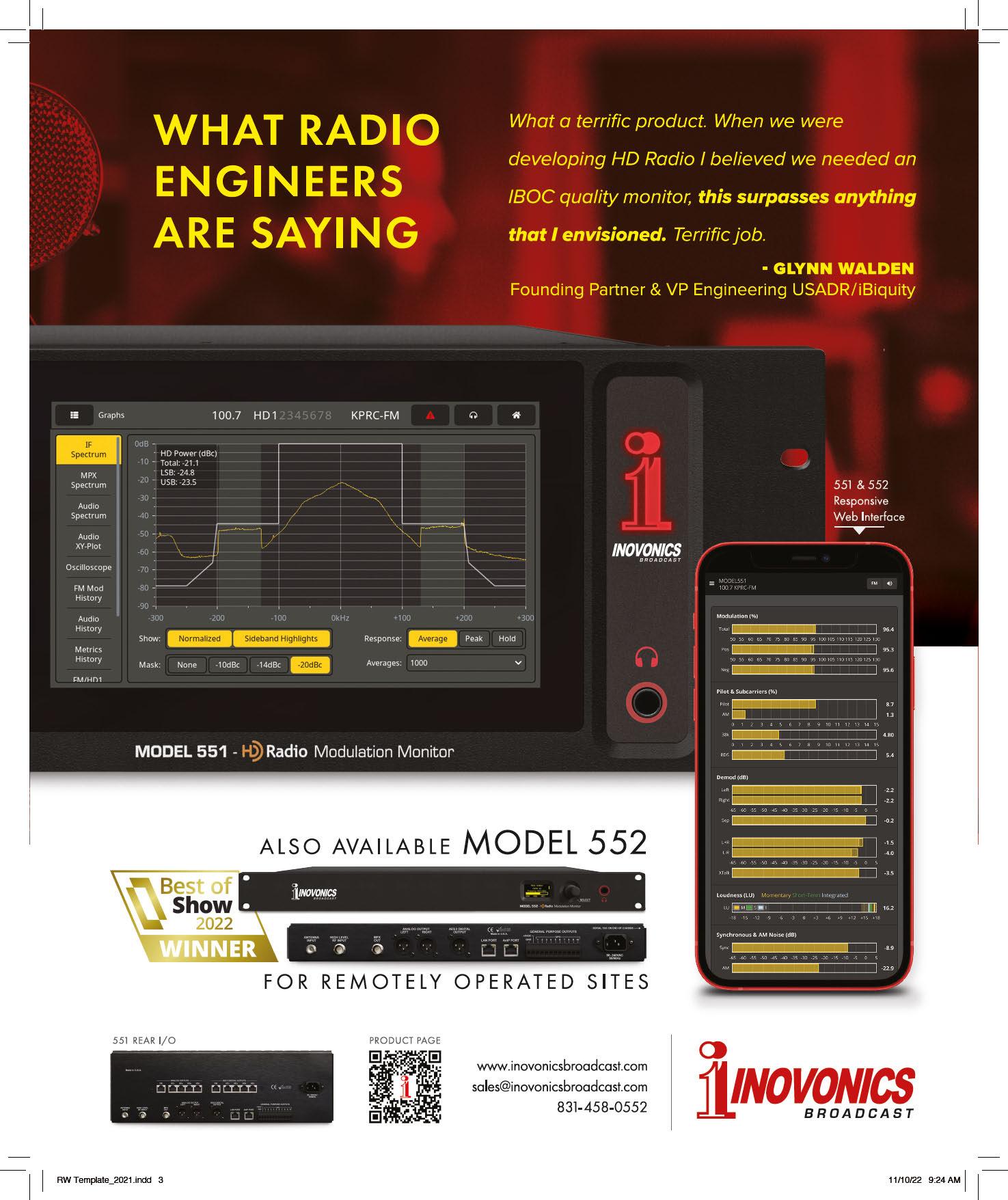
Writer Jerry Del Colliano
A threat even bigger than no car radio
It’s about paid subscriptions — to the manufacturer, not the radio station

Apps for everything from optional equipment to entertainment is a big attraction for auto manufacturers.
For AM or even FM radio in cars, the solution could be worse than the problem: When manufacturers stop including radio as an in-console function, the workarounds make radio less local and face unimaginable competition, but what will roll out next is even more concerning.
The straight scoop
AM interference in electric vehicles, leaving radio out of the entertainment center, making radio more difficult to access — these are the real problems that the radio industry now faces.
Fact: Electromagnetic fields generated in non-gasoline engines make AM virtually unlistenable, spurring manufacturers to leave it out. FM is more resistant to electromagnetic fields so for the present it survives.
Ford’s popular F-150 Lightning, Telsa, Volvo, Porsche and Audi have removed AM from their electric cars. Tesla will sell consumers an app to get radio or satellite radio for a rental fee through internet delivery that gets around the electromagnetic interference.
The rest of the story
A solution like a subscription to TuneIn opens a can of worms for broadcasters. While it allows a listener to listen
to their favorite local station — even AM — it also delivers thousands of other competitive choices that may seem or become more attractive.
Part of the problem is the popularity of CarPlay and Android Auto, which have retrained consumers — especially young ones — to choose from a world of streaming, programming and entertainment, not just what local radio stations are offering.
Between the music
Sen. Ed Markey is asking 20 car manufacturers to keep radio in their cars for emergencies — likely a losing battle.
Manufacturers are also claiming that AM radio drains the batteries of their electric vehicles.
The auto argument: Most radio stations are available through streaming services.
In spite of industry research that radio is still the numberone use of drivers’ time, manufacturers want a more modern approach.
The entertainment system has been largely commandeered by Apple and Google, a familiar interface that will make it cheaper for automakers to build cars.
Electromagnetic interference is a legitimate issue but if consumers wanted AM radio that badly, the manufacturer would have a workaround — it just isn’t that important.
SiriusXM isn’t likely to get off easy either, as manufacturers see paid apps in their future so that consumers can purchase heated steering wheels and seats for one year at a time instead of as a point-of-purchase option, and Tesla is already charging an access fee for satellite radio on top of the expense for the service.
Audi, BMW, Cadillac, Porsche and Tesla are rolling out monthly or yearly subscription plans for active driver assistance or voice recognition.
What they’re saying
Via Wired: “We’ll sell you a car with a dashcam, or that can be driven hands-free, or that can coach you with telematics data to be a better driver. But if you actually want to use any of the new toys, you’ll have to pay extra. Credit Tesla with popularizing the notion that cars could be updated with software even after they’re driven off the lot.”
My deadly honest point of view: It’s about paid subscriptions — to the manufacturer, not the radio station.
Radio sees the elimination of AM and even radio from the dash as a consumer mistake, manufacturers see it as a chance to make money.
The author is publisher of Inside Music Media and professor at the NYU Steinhardt Department of Music and Performing Arts Professions Music Business Program. Subscriptions to his newsletter are available at https:// insidemusicmedia. com/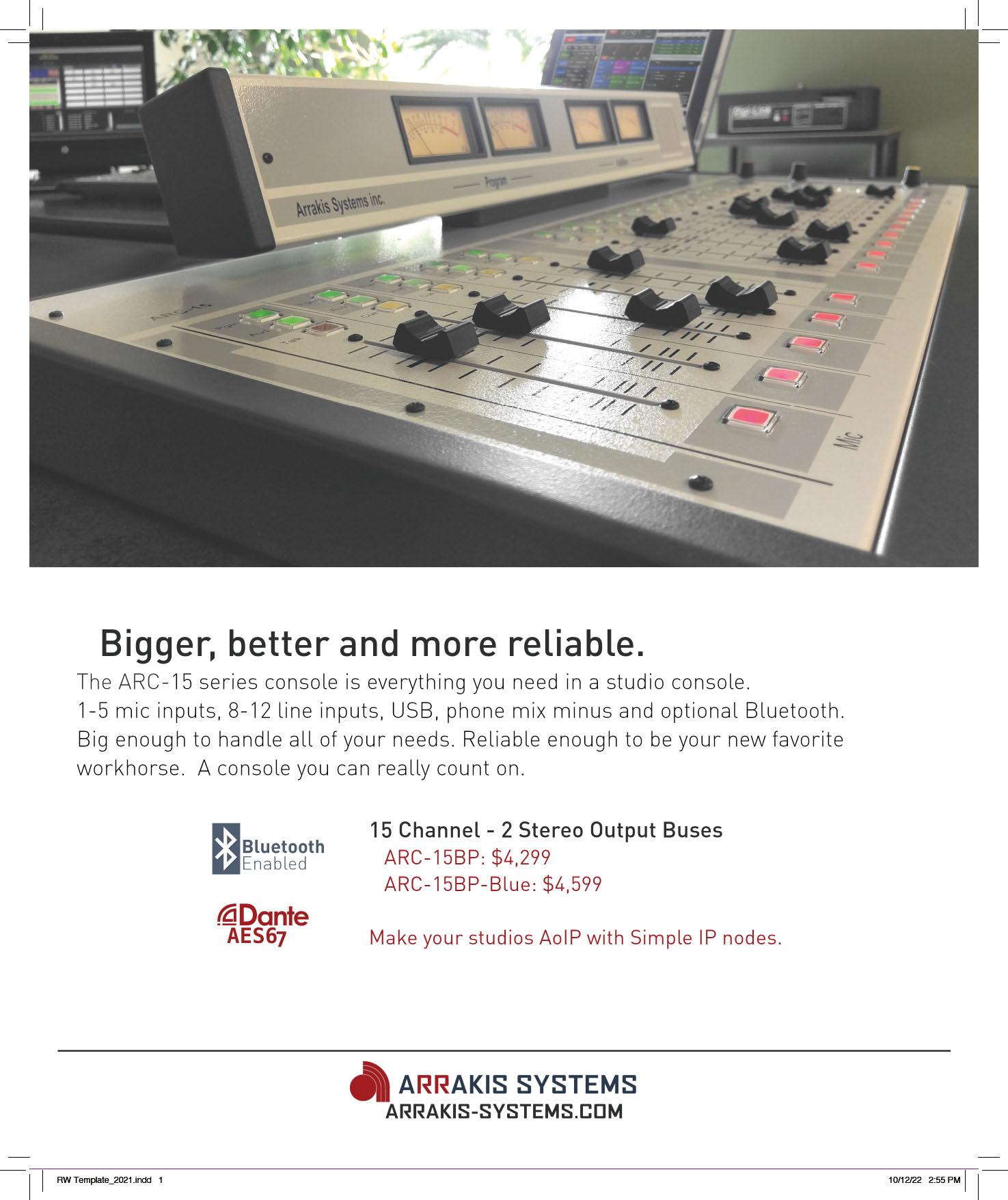


Mark Persons
CPBE, CBNT, AMD





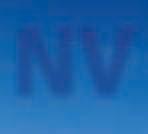

The author is retired after more than 60 years in radio broadcast engineering. He is a Life Member of the Society of Broadcast Engineers and recipient of its John H. Battison Award for Lifetime Achievement.

Let’s talk about some basics of audio for radio
It’s important to understand audio in the context in which we use it
Audio passed from lips to ears over short distances before the advent of radio. Broadcast changed that by using electronics to transport audio over great distances.
As you know it starts with a microphone. That clever device converts mechanical sound energy of vibration in the air into electrical energy. It is not magic, just good basic science.
I won’t go into the many microphone types, but it is important to understand that broadcast engineers must deal with sound as electricity.
How is audio electricity different from 120 VAC power?

In the analog audio world, microphone and program audio are very low in
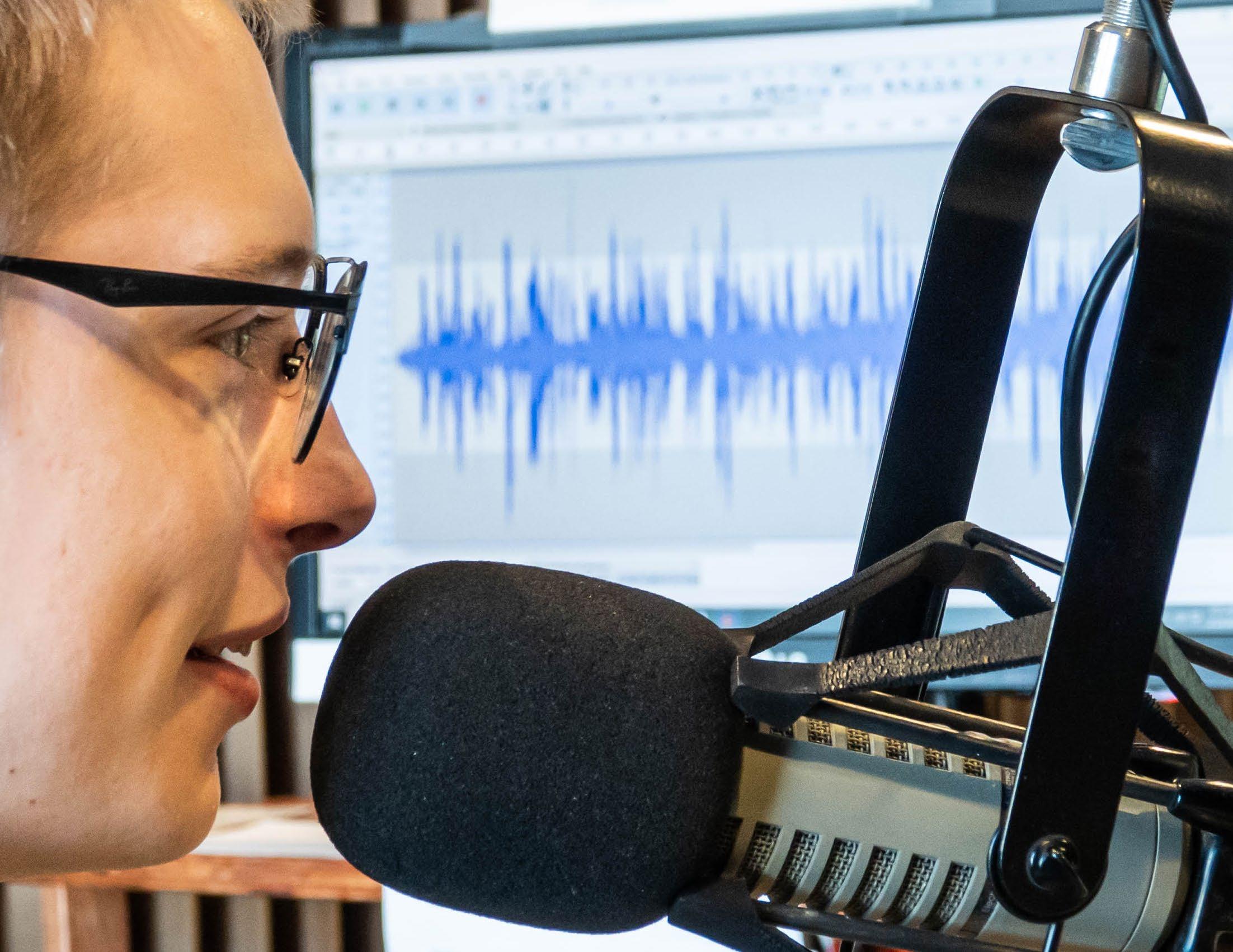

voltage of alternating current (AC) power. We typically think of audio frequency range as 20 Hz to 20 kHz, but to be practical, FM audio goes up to just 15 kHz while AM is 10 kHz. A typical dynamic microphone has an output of –50 dBm. That is 50 decibels below 1 milliwatt of power. It is so small that an amplifier is required just to bring it up to a level that can be worked with.
Tube and then early transistor audio amplifiers contributed unwanted artifacts such as noise and distortion that colored the sound. Today we have wonderful electronics to keep audio sounding pristine — assuming it is all set up and operated correctly. (See my article on audio levels at radioworld.com, search “Does anyone know what the correct level is.”)
A single device adjusted incorrectly in an audio chain can degrade or ruin its sound. There is almost no fixing it after that.
Dynamic range
Today’s broadcast audio devices usually have 90 dB or more of range between residual noise, known as the noise floor of the equipment, and peak clipping. Audio between those two limits will be amplified cleanly. Before deregulation, FCC rules required FM broadcast proof of performance measurements to show at least 60 dB of dynamic range between 100% modulation and noise. It was only 45 dB for AM.
More is not better
I’ve written about this before, but it bears repeating. The most typical example of mistreating audio is running levels too high. You’ve seen it when announcers are recording or at the controls of a show. Enthusiastic operators often believe that “more is better” when it comes to setting audio levels. They crank it up, making the VU meters go into the red, to make it louder!
Fig. 1 shows an oscilloscope with voice audio going up and down in voltage. You’ll notice the tops of two of the positive peaks are cut off and there is a smaller amount of clipping on negative peaks. Audio that was intended to go higher in voltage was stopped by the limitations of the equipment to reproduce it. That means pieces of audio were then missing from the final mix because the audio
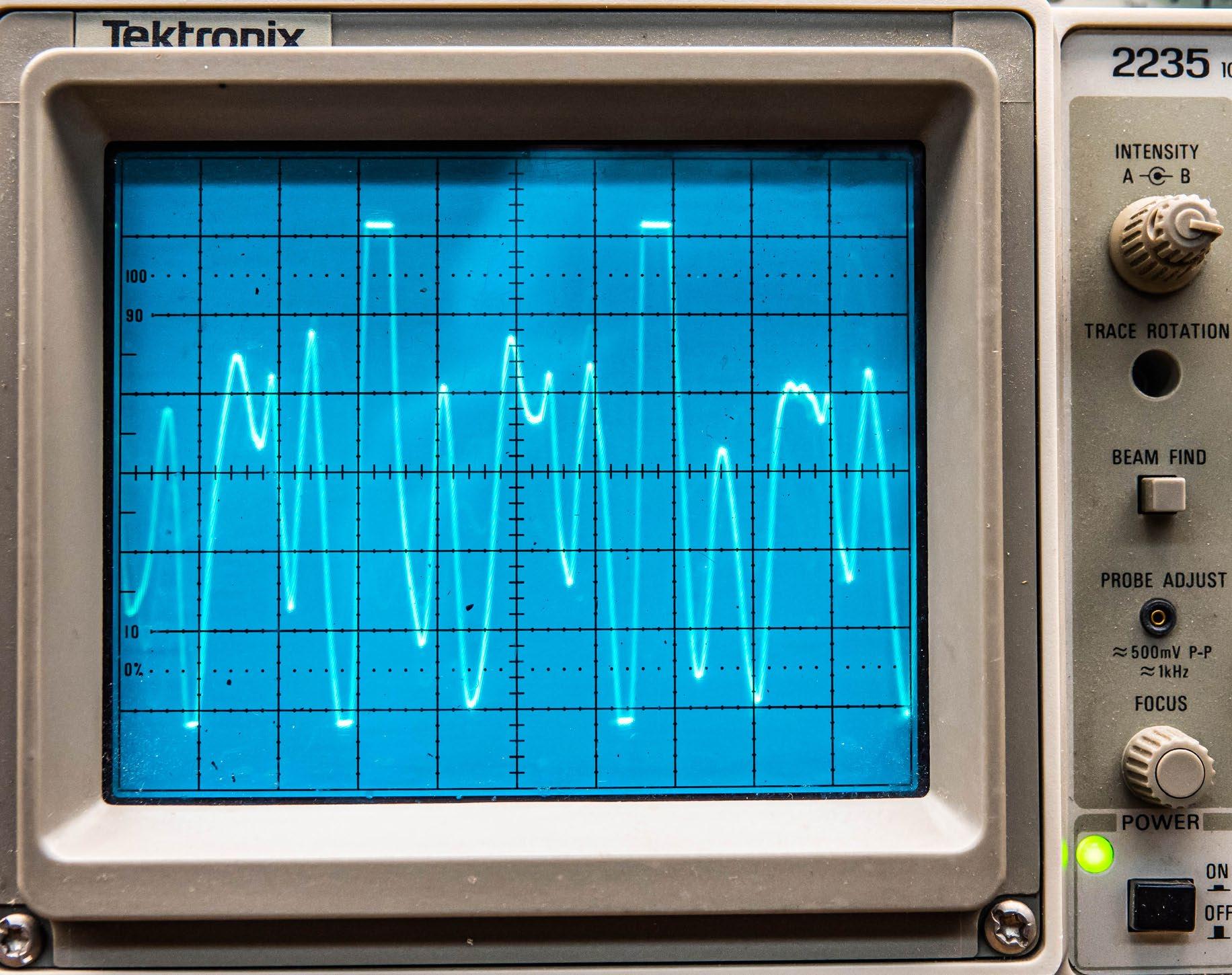
has exceeded the peak-to-peak voltage capability of the equipment. The sound quality is now degraded. There is no need for this kind of audio mishandling when the noise floor is so low.
Try it for yourself
Deliberately run audio into the red and beyond on a recording. You’ll hear the mush that it turns into. Valuable audio information is lost, and it just plain sounds bad. Not all hear the beginning of clipping where audio peaks are missing. Female listeners are usually the first to notice problems. They don’t know what it is, but tuneout is the result.
Digital audio has the same problem, where analog audio is converted to digital. Overdriving the input to an analog to digital converter will result in peak distortion.
The opposite can happen, especially during talk shows with multiple microphones. Guests are often soft-spoken. The host or control operator can hear just fine, but listeners, especially in noisy automobiles, have trouble hearing. Car passengers don’t have the benefit of studio headsets cranked up. Road noise tends to mask radio voices. There is another tune-out.
Analog broadcast console audio is high enough to hear when you put a headset across the audio output terminals, or anywhere in an audio chain leading up to audio processing.
Below Fig. 1: Audio clipping on voice peaks.“
Deliberately run audio into the red and beyond on a recording, and you’ll hear the mush that it turns into. Valuable audio information is lost, and it just plain sounds bad.
Audio Fundamentals
I always carried a traditional telephone handset with alligator clip leads to listen to and find problems in audio paths. Today’s headsets with impedance of 4 to 32 ohms are not as suitable as older highimpedance (600 ohm or more) headsets that do not seriously load and reduce audio on a line they are connected to.
Audio power
By definition, 0 dBm is 1 milliwatt. That and +4 dBm (2.5 milliwatt/.0025 watt) is the audio output of most analog audio consoles today.
A small traditional (incandescent lamp) flashlight might consume 1 watt of power. You can see by comparison that audio power is very small in broadcast facilities. The exception is studio monitor speakers that run many watts. Audio from a public address system might have enough power to illuminate a good-sized light bulb.
Broadcast audio level is measured as dBm into a 600-ohm load. This standard goes back to the days when audio was sent from a studio to a transmitter site, via a dedicated telephone line. Referring to my earlier article “Ohms Law Answers Your Questions,” also found at radioworld.com, we can figure voltage and current. By knowing two electrical parameters, we can solve for the third.
In this case, 1 mW into a 600-ohm load is 0.775 volts. You won’t measure that with a multimeter because audio varies from zero volts with no audio to something much higher during voice or music. Fortunately, there is metering built into audio consoles and digital recording software. Those meters are calibrated to show when audio levels are correct. Rely on them, not your ears,
when adjusting audio. Your ears are a bad judge of how loud or soft audio is.
Impedance matching was a big concern in handling audio until the early 1980s. Gain was expensive to achieve with tube and transistor circuits. Audio transformers were a popular choice for changing impedance and coupling precious audio from one device to another in the broadcast chain. Integrated circuits with operational amplifiers solved the problem by providing gain with high-impedance inputs and lowimpedance outputs at a low cost.
Impedance
For the purpose of this discussion, audio impedance can be thought of as mostly resistance. It is what you have in a resistor. Audio impedance can contain some inductive reactance or capacitive reactance, but that is not normally a factor unless it is added intentionally.
Audio transformers might still be found in some legacy installations for coupling audio from one place or device to another. Frequency response can be poor if the transformer doesn’t see a specified load resistance. Low and high frequencies may no longer be at the same level as mid-range 1 kHz and could sound strange. The other problem is that all audio transformers taint the audio a bit. What comes out of a transformer will not be exactly what went in.
Transformers have traditionally been used to solve hum problems in audio. They can ignore ground voltage differences between two devices. This can even happen within a studio between two pieces of equipment.
Above Fig. 2: Terminating an audio transformer properly“One situation where transformers can go wrong is when you connect one transformer directly to another. The result can be poor frequency response.

Audio Fundamentals
One situation where transformers can go wrong is when connecting one transformer directly to another. The result can be poor frequency response. I remember an unwanted 4 dB bass boost around 150 Hz when that happened. All that was needed was a 3 dB resistor audio pad between them to keep the transformers from “electronically talking” to each other. Audio transformers can exhibit poor frequency response when not terminated or not terminated properly (Fig. 2). If an audio console has an output transformer, make sure it sees the specified load impedance, which is normally 600 ohms. If the device it feeds has an input impedance of 600 ohms, then that is OK. If it is feeding a 10,000-ohm bridging device like a digital recorder, then it needs a little help. Put a 620-ohm or 680-ohm resistor across the output terminals. The total resistance is close enough to 600 to keep the transformer happy. The power is so low that a quarter-watt resistor is fine for the application.
Fig. 3 shows an audio transformer terminated with a half-watt resistor. If you do the math, sixteen 10,000ohm loads have a combined parallel resistance of 625 ohms. It works.

An analog audio console without transformers might have an output (source) impedance low enough to deliver audio at its output terminals so a 600-ohm load could be placed on it without causing problems. Many consoles today have output impedances as low as 50 ohms. The console doesn’t need to see a termination resistance. Audio can be fed from there to multiple locations if those devices have an input impedance of 10,000 ohms or so. Up to 50,000 ohms is common in
Groups Push for FM Digital Power Increase
Several large radio companies voiced support for a proposal to amend FCC rules to allow at least some HD Radio stations to operate at higher power levels.
They commented on a petition from the National Association of Broadcasters and Xperi that urges the FCC to use an updated formula in determining maximum power levels. This would allow more stations to increase digital power over the currently authorized digital ERP of –14 dBc without the need for separate FCC authorization. Current rules allow digital stations that meet certain guidelines to operate at 10 percent of analog power.
Xperi and NAB believe that higher power will improve coverage and building penetration while minimizing interference to adjacent-channel stations.
today’s equipment. Today’s active balanced audio solves problems without audio transformers.
In conclusion, beware of audio pitfalls. Know and understand audio in the facilities you work on. Radio depends on keeping listeners. My next article will explore more of the science of broadcast audio.
The FCC combined their petition with another from NAB, Xperi and NPR that would authorize FM stations to use HD Radio with asymmetric sideband power levels without experimental authorization.
Beasley Media Group said it supports both petitions.
“Since 2011, numerous additional studies … have consistently concluded that authorizing asymmetric sidebands on a blanket basis would significantly increase the number of stations eligible to boost power and improve their coverage without causing new host analog or adjacent channel interference,” it wrote.
CMG Media Corp. said, “A consensus has developed in the radio industry that existing rules on digital FM power levels overstate
the amount of protection adjacent analog stations require. The logical conclusion from this review is that many stations could increase digital power on at least one sideband without creating harmful interference to adjacent analog stations.”
NPR asked the FCC to require the licensee of any station increasing its FM digital sideband power levels to notify the licensees of adjacent stations at least 30 days before the power increase.
There are approximately 2,600 FM stations using HD Radio in the United States, according to Xperi.
Reply comments in Docket 22-405 are due Feb. 13. Comments can be filed in the FCC’s Electronic Comment Filing System.
— Randy J. Stine Right Fig. 3: Audio transformer with terminating resistor.
Above Waze gives drivers information about heavy traffic, construction, closures and other activity, as shown here with the area west of the White House.
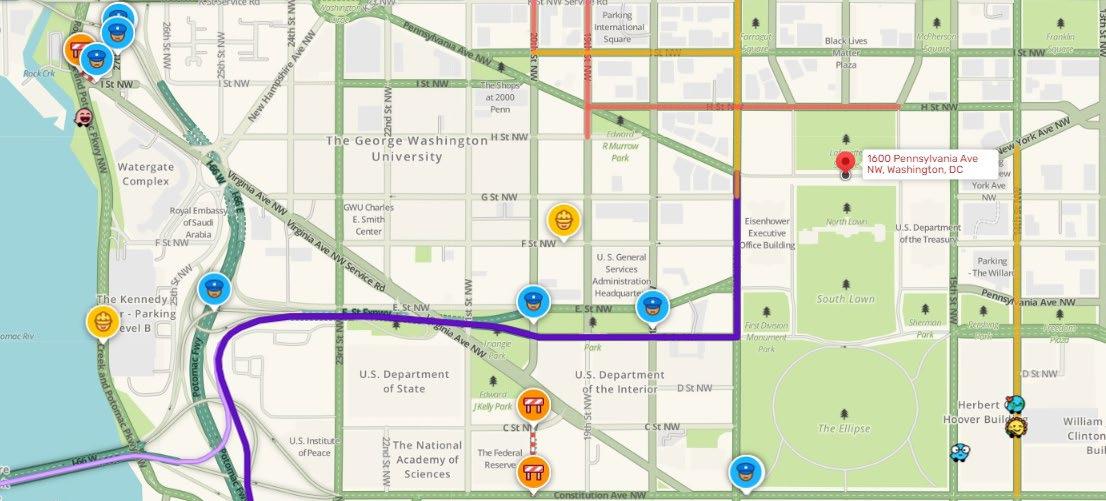
Traffic reporting in the age of Waze
Do traffic apps make radio traffic reports redundant? Nope.
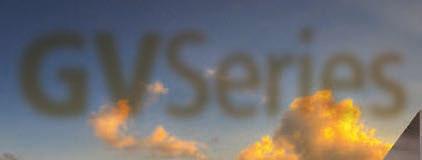
Before smartphones and their map apps became almost universal, drivers in major cities like Los Angeles and Atlanta relied on radio traffic reports to find delays and alternate routes to bypass those delays.
Flying into Atlanta’s Hartsfield Jackson airport, I’d look to set a push button for WSB (95.5 FM/750 AM) and listen for reports from the late Captain Herb Emery in the Skycopter to get me around I-285 toward the “Big Chicken” quickly and safely.
Arriving at LAX, I’d tune the radio to KNX (97.1 FM/1070 AM) and I’d listen for Jim Thornton for advice on avoiding the SigAlerts and police chases that pop up on L.A. freeways. So did a lot of other drivers.


Now some of those drivers rely mostly on the Waze app. I have it on my phone as well. The question arises: Does Waze make traffic reporting on the radio redundant?
The app for iOS and Android devices relies on crowdsourced reports from users in the same vicinity to notify other users of construction, accidents, traffic backups and more.
It gives the information, but the driver must decide how to process it. If the driver is not familiar with the area, wrong choices may result.
Waze notifications also depend on the accuracy of those drivers or others reporting through the app. Sometimes, those notifications lag. At one time, Waze had a Waze On Air app and a Waze for Broadcasters program, as Radio World reported previously, but neither is active any longer. Waze does encourage broadcasters to use its live map to monitor traffic conditions or embed that map on their station website.
One tool among several
Traffic reports are still important at WSB and KNX. Waze is a part of their toolbox, but it is not the major source of information.
Doug Turnbull reports on Atlanta-area traffic for WSB radio and flies in the Skycopter for WSB(TV). “We may get leads (from Waze) on where there might be something from a crowdsourced incident, but we then go and try to confirm that ourselves,” he said.
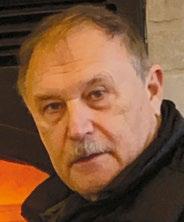

The station also gets information from listeners, police agencies and the Georgia Department of Transportation’s network of cameras, which can be accessed remotely from the WSB traffic center.
“We released our WSB Triple Team Traffic Alerts app in 2017, which we populate with traffic incidents that we curate. We record a traffic report attached to each one that plays automatically when someone running the app drives near
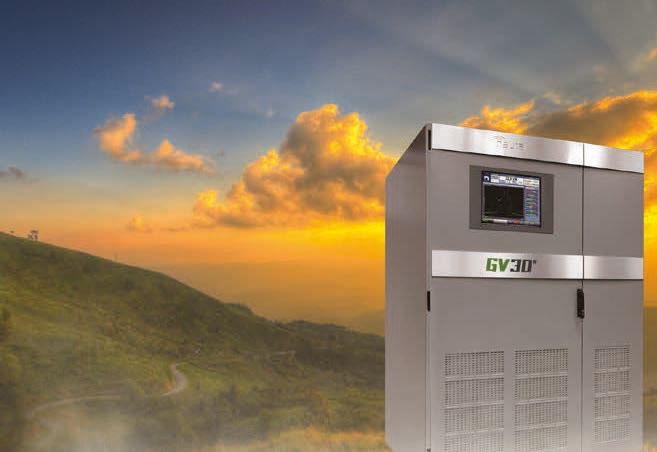
it. We positioned this in Atlanta as the smarter alternative to Waze, since we are traffic experts and are goalies of all that information out there.” The app, the on-air reports and the Skycopter are monetized with sponsorships.

Brian Douglas is an anchor and traffic reporter for KNX in Los Angeles. You’ll also find him in the skies over the Southland’s freeway system.

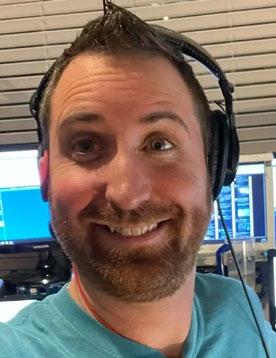
“Some listeners do use Waze or Google Maps, but ultimately they want to hear what the issue is from a live person,” he said.
“That’s the advantage we have over the traffic apps. They’ll tell you that there’s a crash ahead and that the drive slows and maybe an alternate; but listeners do want to know the details of why the drive isn’t moving. A live person can tell you the exact details and give you alternates that a computer algorithm really can’t.

“Waze can only show you so much, and used as one of many tools, it can be beneficial. It’s not good to only use Waze, as the info isn’t detailed enough. Reports from our tipsters that call in — and they call in a lot — are much more useful,” he continued.
“Ideally if I can have three sources of info for every incident, that’s the best. I use info from our tipsters that actually drive by, California Highway Patrol info, sometimes the Citizen App and Quickmaps from CalTrans,” the California Department of Transportation.
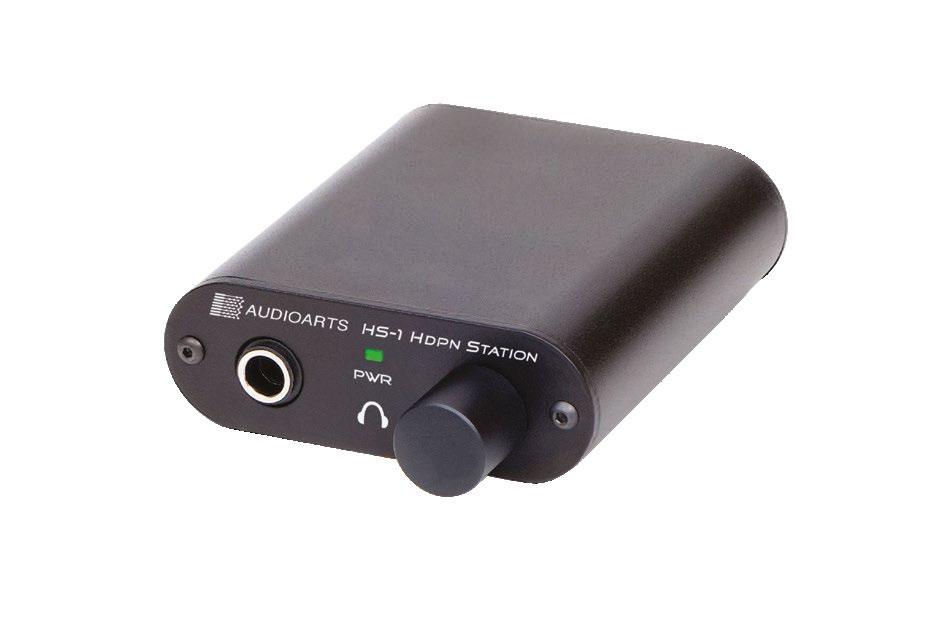
Turnbull offered advice for would-be traffic reporters. “Put yourselves in the mind of the commuter. Say things how you would want to hear them and talk about what you would want to hear about. Just listing crashes and stalls and sounding like a traffic report isn’t good enough.

“Don’t settle. Keep digging. This is the heartbeat of local radio, and almost everyone cares about traffic.”
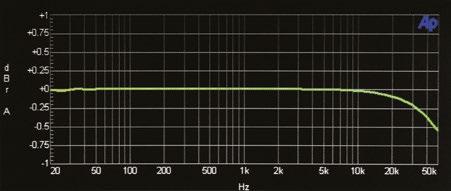 Doug Turnbull
Brian Douglas
Doug Turnbull
Brian Douglas
“We positioned this in Atlanta as the smarter alternative to Waze, since we are traffic experts and are goalies of all that information out there.
Why radio should care about clean rooms
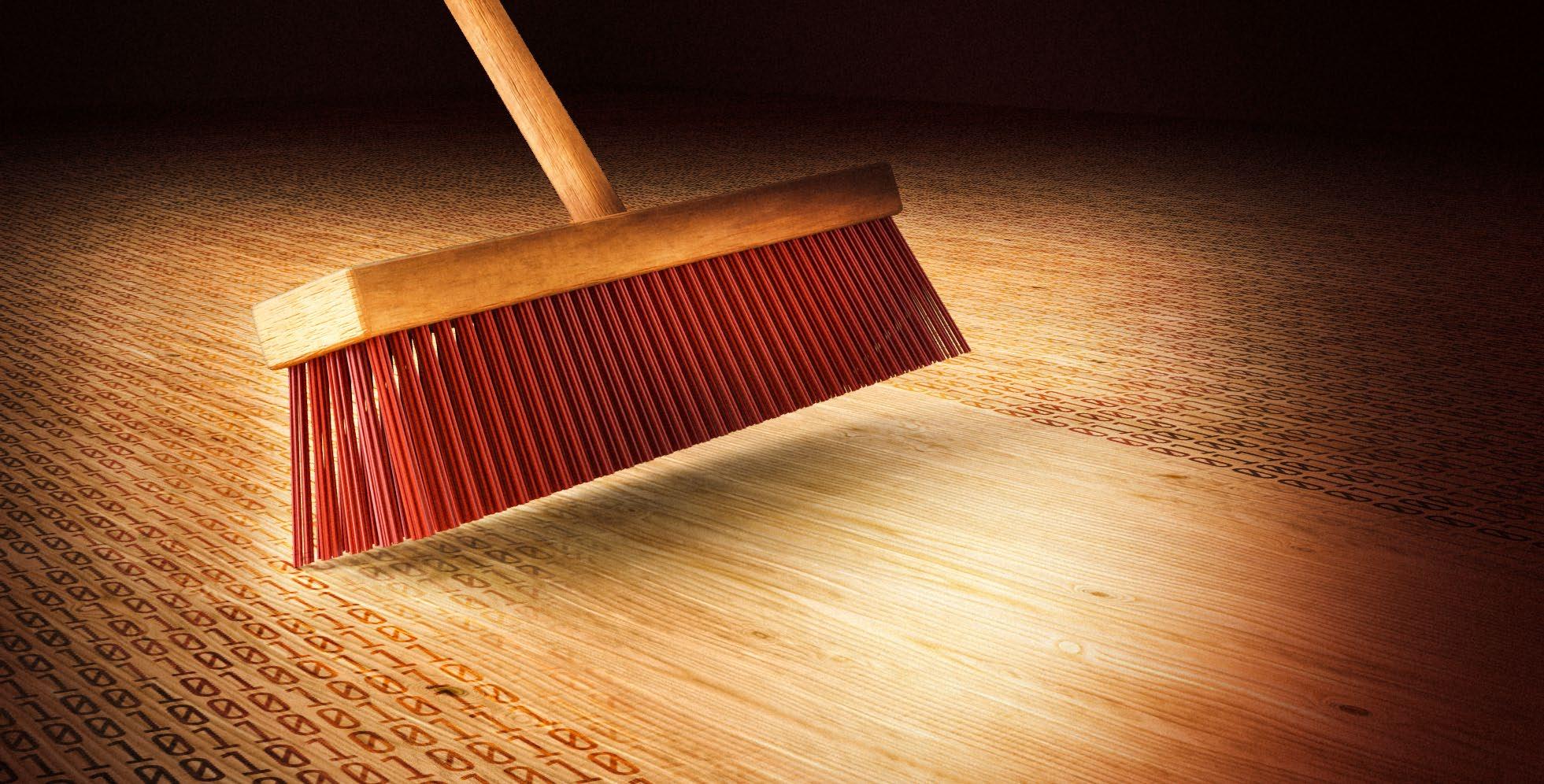
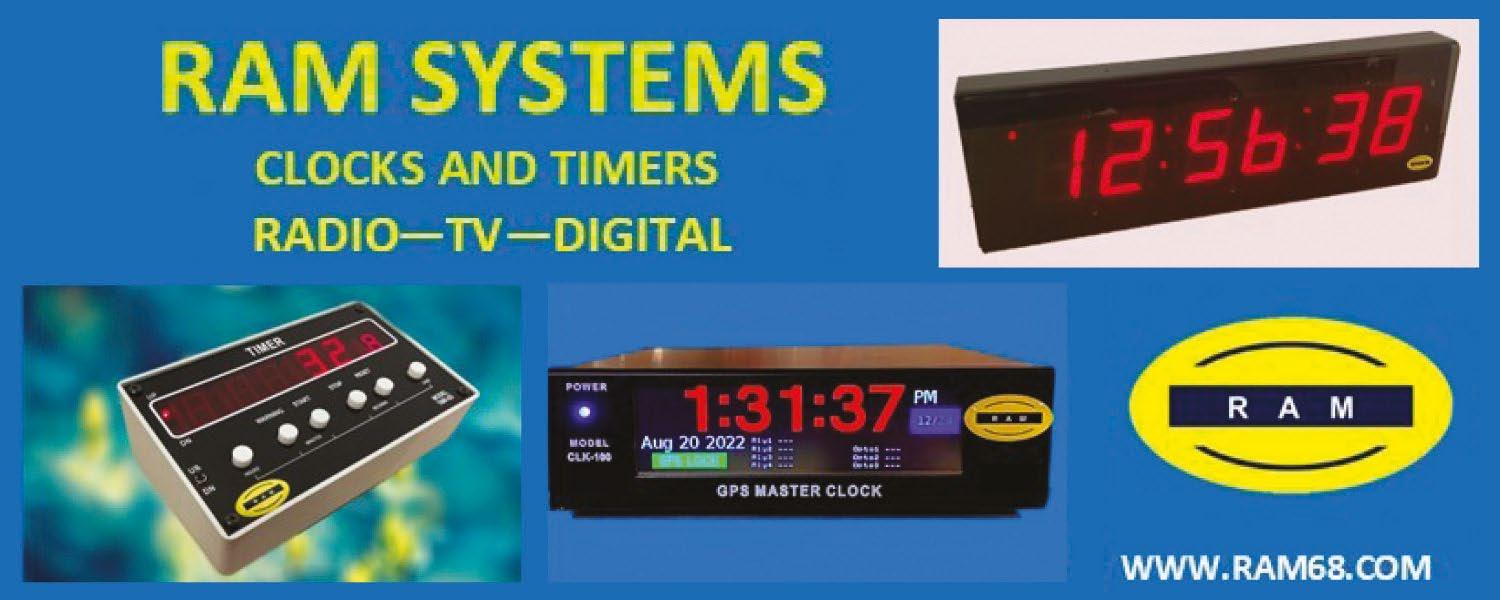
Are they the future of one-to-one marketing?
You’ve heard of clean jokes. Now get ready for “clean rooms” as the next big buzz phrase. You probably think of a clean room as a “regulated space that is designed to control contamination and aids in the removal of airborne particles,” as one technical website puts it.
But that’s not what we’re talking about here. The term also is used in marketing, though many professionals are not yet familiar with it.
The website TechTarget states: “A data clean room is a technology service that helps content platforms keep first-
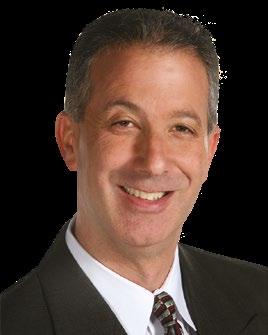
person user data private when interacting with advertising providers.”
The goal is to scale the use of identity for advertising purposes while protecting the privacy of consumers.
If you’ve ever placed advertising on Amazon, Facebook or Google, you have effectively paid for the use of a clean room. In a clean room, these three platforms can share aggregated customer data with advertisers with controls. In this case, an advertiser could detect duplicated reach. Even if you’re not a marketer, your personal data has been “washed” in a clean room, so that it becomes anonymous. To date, these large platforms have been the entities that decide what happens in their own clean rooms.
This has gradually begun to change as more companies opt for storing and manipulating their own first-party data. This transition is being accelerated by Google announcing the end of third-party cookies in Chrome by the end of 2024. To remind you, third-party cookies can harvest IP addresses, browser and search history, device info, sexual preference and much more. Several browsers, including Safari, have already eliminated cookies, but since Chrome has the
largest share of users, the digital advertising industry is trying to develop plans for life after cookies are baked.
The use case for clean rooms is being hotly debated because of scale, cost and implementation. Many feel that a clean room can go beyond just surfacing digital ads to users without being fined for privacy violation by government entities. It’s been shown that clean rooms can provide marketing attribution and contribute to machine learning.
Early this year, Amazon Web Services is launching AWS Clean Rooms. Yes, Amazon ads already run through a clean room via Amazon Marketing Cloud, but this new service permits companies to mix anonymized first-party data with other AWS users. This is a large sign that clean room tech is poised for growth. While Amazon’s ad biz is already taking a huge bite out of Meta and Google, this gives them firstmover advantage in learning how to maximize the data.
Three reasons that radio should care about clean rooms:


• First-party data is vital to your own marketing success.
• Your account executives must be the local media experts as they call on your clients, so they need to be able to explain clean rooms.
• The future could entail your being the local media leader in providing clean room advertising solutions for your clients.
Next step is simply learning more about clean rooms by doing your own research. Happy cleaning during 2023!
Shane on the cloud
“A number of broadcasters have a perception that anything ‘cloud’ or ‘virtual’ inherently means something involving the internet. This is not true.”
So says Shane Toven. He’s among the radio engineers who spoke with us for a new ebook.
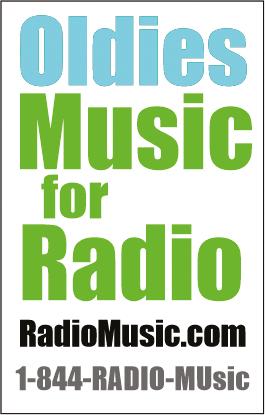

Toven is the senior broadcast engineer for Educational Media Foundation. He is responsible for high-level support of EMF network stations, R&D and finding “what’s next” in broadcast technology.

“Cloud architecture can take any number of forms including complete public cloud deployments, such as Amazon AWS or Microsoft Azure; an on-prem environment (such as VMware ESXi and others; or a hybrid of both,” he said. “The major factors are your budget and tolerance for risk.”
Find that interview and discover what engineers and manufacturing executives from Telos Alliance, Northwestern Media, Wheatstone, Digigram, ENCO and RCS have to say on this topic. Read the free ebook “Cloud/ IP-Based Content Creation and Delivery” at com/ebooks.



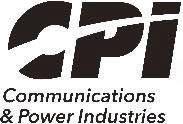





Help Farm Radio fight for radio
We need to show carmakers that free OTA radio is still wanted and needed
Brian Winnekins Owner, WRDN Radio Durand, Wis.This is one in a series of occasional commentaries from the National Association of Farm Broadcasting.
In 2012, I became the licensee of WRDN 1430 AM Radio in Durand, the seat of Pepin County in Wisconsin, which has one of the smallest county populations in the state.

Many colleagues in the farm broadcasting industry told me I was crazy for buying a standalone AM, much less one in such a small, rural community. Many told me, “AM is dead or is dying” and that I would not last six months.
This year, we celebrated our 10th anniversary of returning the station to the air. All station debt is paid, and the station is an integral part of our community.
Since agriculture is a $1.5 billion industry in our listening area, agricultural and farm-related news is a critical part

of our daily programming. We carry seven hours of farm content each weekday plus local news, high school sports and other community events. Many farmers listen to us in their vehicles, trucks, tractors and combines.
Recently, I was concerned to hear that Ford Motor Co. had decided to remove AM radio from the F-150 Lightning electric vehicle starting in 2023.
I don’t expect that many of our farmer listeners will purchase an EV anytime soon, but I am concerned that this decision could spread to non-EV vehicles and even farm equipment.
If the farm broadcasting industry does not respond to this, it also could lead to the elimination of FM radios from vehicles for many of the same reasons Ford is using now to eliminate AM. That would mean an end to free, over-the-air radio in one of our largest sources of farm-broadcasting listeners: vehicles.
Action needed
Recently, Massachusetts Sen. Ed Markey wrote a letter to vehicle manufacturers expressing concerns about the removal of AM radio from EVs.
It’s great to see him put a spotlight on this, but it would be unwise for radio to depend on a government mandate requiring free over-the-air AM/FM receivers in vehicles. The vehicle lobbyists would fight this; and if it did pass without any receiver standards, it would lead to even lowerquality receivers installed in newly manufactured vehicles.
So what can “radio” (and, in my world, “farm radio”) do about this situation?
As a member of the National Association of Farm Broadcasting, I have talked with other association members, station owners, general managers and association members. We all agree it is time for radio to “Put up or shut up.”
Radio often touts how we can deliver our listeners to businesses. Well then, it’s high time radio delivers our listeners to the vehicle manufacturer of their choosing, asking them to demand they each keep free, overthe-air, high-quality radio receivers, covering ALL commercial broadcast spectrums, in ALL vehicles.

Our industry needs to prove to vehicle manufacturers that free overthe-air radio is still wanted and needed in vehicles by taking action.
At my station, we are airing commercials, telling our listeners about Ford’s recent decision and what it could mean to free, over-the-air AM/FM radio. We ask them to contact their vehicle manufacturers. On our website, we provide links to the various manufacturers to help listeners make that contact. We also demonstrate how good AM can sound on our website as our audio stream is fed by an over-theair Carver TX-11A AM stereo receiver.
Yes … AM stereo
Now, it does us as a radio industry no good to have receivers in vehicles that are of inferior quality; providing radio listeners with a terrible experience simply drives them away. Our listeners deserve quality receivers, especially if they are purchasing a vehicle costing several tens of thousands of dollars.
If a vehicle can drive itself, it should be expected to have a quality, free, over-the-air AM/FM receiver that can receive HD AM/FM, AM stereo, FM stereo and noise blanking technology … but only our listeners can demand this. In fact, listeners are willing to demand this.
In 2021, we converted WRDN to AM stereo as part of an overall upgrade of our air chain. Within a few weeks, some of my farmer listeners started asking what we did to the station because it “sounded like FM.” They also asked me why the station sounded so good on their old work trucks but sounded terrible on the $70,000 trucks they had just purchased.
They all thought it was unacceptable that new vehicles had terrible receivers in them, so I encouraged them to contact the manufacturers to complain, and that is what happened. I even helped a few farmers at the station find and fill out the contact form for their vehicle manufacturers.
The technology needed to reduce electrical noise in EVs is available; the manufacturers are saving pennies by eliminating radio. AM receivers can be made far superior to their collective current state. Today’s radios have the signal processing capabilities needed to implement receiving systems that were bound by patents a decade ago. Now, all the art required to produce a superior AM receiver is public domain.
We, the broadcasters, along with our listeners, need to force the industry to produce the product we deserve and protect our livelihood for the future. Let’s use the power of our medium to save AM (and FM) radio in vehicles!
The author owns WRDN Radio in Durand, Wis., where he serves as a farm broadcaster for the greater Pepin County agricultural community. He was president of the National Association of Farm Broadcasting in 2016 and was named the 2020 NAFB
How to submit
“
At my station, we are airing commercials, telling our listeners about Ford’s recent decision and what it could mean to free, over-the-air







